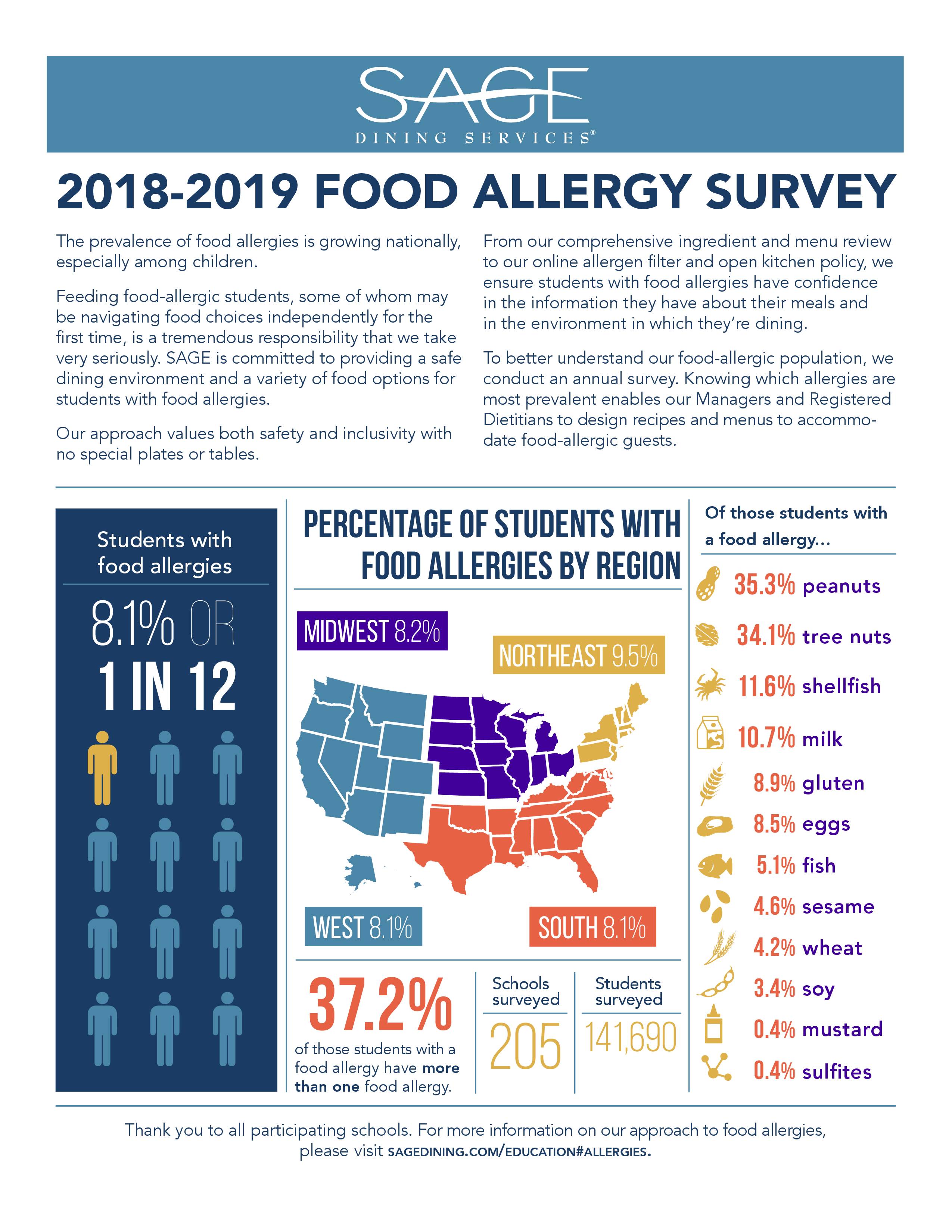Is sesame on the menu in your school’s cafeteria or dining hall? If so, it might be a good time to consider also indicating the presence of this popular ingredient. In the 2018-2019 food allergy survey by SAGE Dining Services, 4.6 percent of the total food-allergic population reported having an allergy to sesame seed and oil. That’s an increase of nearly 15 percent over the 2017-2018 academic year, which followed 30 percent growth in reported sesame allergies since 2015-2016. Sesame allergies are now more prevalent than allergies to soy and wheat, whose incidences (along with most other allergies besides sesame) have remained stable among SAGE schools. “We don’t know why the incidence is growing, but some have theorized it may be due to more sesame exposure in the modern diet,” said Leslie Vogel, nutrition director at SAGE, which provides dining options to many independent schools.

Sesame is touted for a variety of health benefits and widely used in Asian and vegetarian dishes, as well as in many breads and crackers. It is not currently on the U.S. Food and Drug Administration’s list of eight allergens (milk, egg, peanut, tree nut, wheat, soy, fish and shellfish) that must be disclosed under the Food Allergen Labeling and Consumer Protection Act. But the FDA is considering adding sesame to the list, and in October the agency sent out a request for data and other information on “the prevalence and severity” of sesame allergies. In responding, SAGE noted the increase in its schools, writing, “Clarity in labeling is needed to protect those impacted by this allergy. Feeding food-allergic children is a tremendous responsibility…. We encourage the FDA to recognize sesame as a major food allergen and to require clear labeling of sesame on all food products.”
The 2018-2019 SAGE survey, with input from 205 schools representing more than 141,000 students, covers allergies to 12 foods in all: the FDA’s list of eight, plus gluten, mustard, sesame and sulfites. That survey also found that 8.1 percent of students have food allergies, up from 7.7 percent in 2015. SAGE does recognize sesame as an ingredient in the food it provides to schools. It also recognizes the other 11 allergens listed. Further, SAGE recommends reading food labels carefully to recognize any product containing sesame, including sources of sesame under different names such as tahini and halvah.



